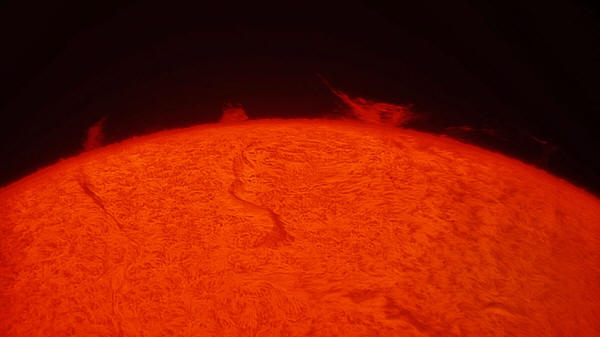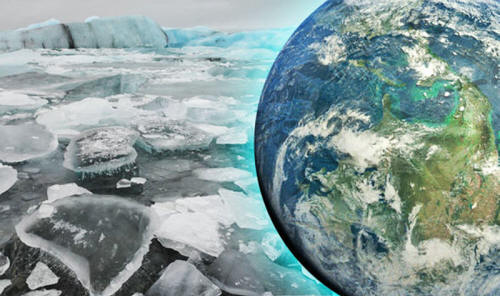|

by Sean Martin
October 22, 2016
from
Express Website

The Earth is heading towards another ice
age
as solar magnetic activity is set to
drop
by up to 60 per cent
in the next 15 years.
Several
scientists have predicted a coming ice age due
to the extreme cooling of the sun as measured by
active sun spots, or eruptions.
Obviously,
the science of global warming is not 'settled'
as claimed by warmists.
Source

An ice age could be
coming
Earth faces another
ICE AGE within 15 YEARS as Russian scientists discover Sun 'cooling'
Experts say that solar activity as low as it currently is has not
been seen since the mini-ice age that took place between 1645 and
1715 - a period known as the
Maunder Minimum where the entire Thames
froze over.
A new model has allowed experts to predict solar activity with more
accuracy than ever before and it suggests that magnetic activity
will fall by 60 per cent between 2030 and 2040.
The model looks at the Sun's '11-year heartbeat' - the period it
takes for magnetic activity to fluctuate.
This cycle was first
discovered some 173 years ago.
However, a mathematician has established a more up-to-date model
that can forecast what the solar cycles will look like based upon
dynamo effects in two layers of
the Sun.

The world's
temperature could drop
Dynamo effects are a geophysical theory that dictate how the
movement of the Earth's outer core conducts materials like liquid
iron across the magnetic field to create an electric current - this
also influences fluid motion beneath Earth's surface to create two
magnetic fields along the axis of the Earth's rotation.
Valentina Zharkova from Northumbria University applied this
theory to the Sun, and was able to predict the affects of solar
cycles with 97 per cent accuracy.
Ms Zharkova said at the National Astronomy Meeting:
"We found magnetic wave components
appearing in pairs, originating in two different layers in the
Sun's interior.

Scene like this
could be common in London
"They both have a frequency of
approximately 11 years, although this frequency is slightly
different, and they are offset in time.
"Combining both waves together and comparing to real data for
the current
solar cycle, we found that our predictions showed an
accuracy of 97 per cent."
Ms Zharkova says the next cycle is set
to peak in 2022, and the cycle after, known as Cycle 26,
will herald a new ice age.

Worldwide
temperatures will drop
She continued:
"In Cycle 26, the two waves exactly
mirror each other - peaking at the same time but in opposite
hemispheres of the Sun.
"Their interaction will be disruptive, or they will nearly
cancel each other. We predict that this will lead to the
properties of a 'Maunder minimum'."
During the Maunder minimum, temperatures
dropped globally by 1.3 degrees Celsius.
Although it seems insignificant, it led to shorter seasons and
ultimately food shortages.
The Maunder Minimum is also known as the "prolonged sunspot minimum"
and is the name used for the period starting in about 1645 and
continuing to about 1715.
During this 70 year period sunspots became exceedingly rare.
The phenomenon was only properly researched in 1976 when John Eddy
published a scientific paper (The
Maunder Minimum).
Astronomers before Eddy had also named the period after the husband
and wife solar astronomers Annie Maunder E.
Walter Maunder who
studied how sunspot latitudes changed with time.
Climate models have shown that low solar activity interferes with
the
Jet Stream - the current of air and warm water which keeps
Britain's temperatures higher than they would otherwise be.
|






